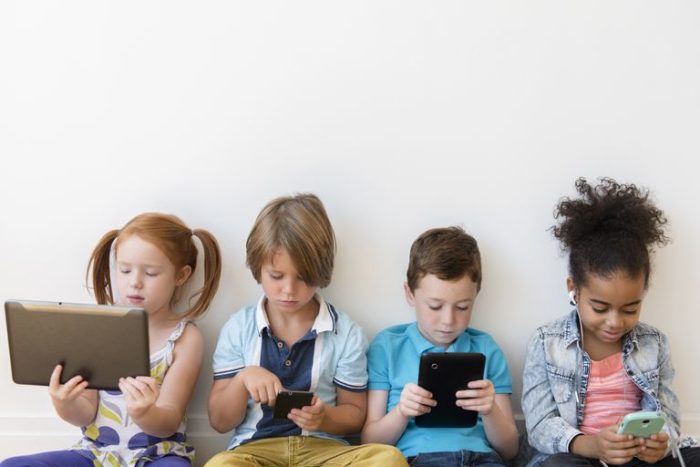🧠 1. They’re Born in the Digital Era
- Today’s kids are called “digital natives.”
They are born into a world filled with smartphones, tablets, Wi-Fi, and smart TVs. - Technology is part of their daily life right from birth — cartoons are streamed online, games are digital, and even their toys are electronic.
- Elders, on the other hand, are “digital immigrants” — they had to learn to adapt to technology later in life, so they tend to use it more selectively or for specific purposes like news, banking, or communication.
🎮 2. Screens Are Designed for Engagement
- Mobile apps, games, and videos are made to capture attention through bright colors, rewards, notifications, and animations.
- Kids’ brains are especially sensitive to instant rewards and stimulation. When they win a game or get a “like” on a video, it triggers dopamine release — a chemical that creates pleasure.
- This reward loop encourages them to spend more time on screens without realizing it.
💬 3. Social Connection Happens Online
- Kids today make friends, chat, and share experiences mostly through digital platforms like WhatsApp, Instagram, Snapchat, or online games.
- Social media gives them a sense of belonging and identity — things that are very important in childhood and teenage years.
- Elders often have offline friendships and family interactions, so they don’t rely on online connections as heavily.
📚 4. Education Has Gone Digital
- Schools use smart boards, e-learning apps, and online resources for teaching.
- Homework and research often require internet access, and digital assignments are now common.
- This means even academic use adds to total screen time.
- For elders, learning or reading usually happens offline — through books, newspapers, or television.
🧩 5. Curiosity and Exploration
- Children are naturally curious and love discovering new things.
- The internet gives them access to videos, games, art, and information instantly.
- This constant flow of novelty keeps them engaged, while elders may prefer stable routines and familiar activities.
🕹️ 6. Entertainment Has Moved Online
- In the past, kids played outdoor games or watched TV. Now, they use YouTube, Netflix, or gaming apps for fun.
- Online entertainment is easily available 24/7 and personalized — it “learns” what a child likes and keeps recommending similar videos or games.
- This endless cycle often leads to longer screen time without breaks.
🏠 7. Limited Outdoor Activities
- Many children today live in apartments or cities with limited safe outdoor spaces.
- Parents are also busier and more protective, so kids stay indoors more.
- Screens become their “window to the world” — a way to play, learn, and connect safely from home.
👨👩👧 8. Parental Influence
- Kids copy what they see at home. If parents spend a lot of time on phones (for work, social media, or entertainment), kids naturally imitate that behavior.
- Also, sometimes parents give devices to children to keep them occupied — especially when they’re busy or working.
⚙️ 9. Elders Use Technology Differently
- Elders often use phones for practical reasons: communication, banking, reading news, or watching videos occasionally.
- They usually have more self-control and awareness of time, whereas children are still developing those self-regulation skills.
❤️ 10. Psychological & Emotional Factors
- For many kids, screens provide comfort, distraction, or a way to deal with boredom or stress.
- During the pandemic, screens became their main connection to the outside world — school, friends, even family.
- That habit continued, and many children now find it hard to spend time without a screen.
🌈 Summary
| Aspect | Kids | Elders |
| Born With Tech | Yes, digital natives | No, learned later |
| Entertainment | Online games, YouTube | TV, reading |
| Social Life | Digital-first (social media) | Mostly offline |
| Education | Online learning | Traditional |
| Self-Control | Developing | More stable |

